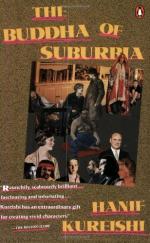|
This section contains 850 words (approx. 3 pages at 400 words per page) |

|
Point of View
The point of view of the novel is the first person and in the past tense. Karim relates the events of his past to the reader after they have already happened. The events are filtered through Karim's perception of them. As is often the case in first-person narratives, Karim is the main character of the story. Karim's voice is a reliable voice. He knows how the action of the narrative unfolds and his emotional reaction to them. He also relays his interpretation of other characters' emotional responses.
The story is told mostly through exposition, with occasional blocks of conversation scattered throughout. There is a lot of focus on Karim's reactions and emotions. We are mostly privy only to events at which Karim is present, although he does occasionally relay pieces of other's characters' history for context.
This serves to focus our attention on the events that...
|
This section contains 850 words (approx. 3 pages at 400 words per page) |

|




